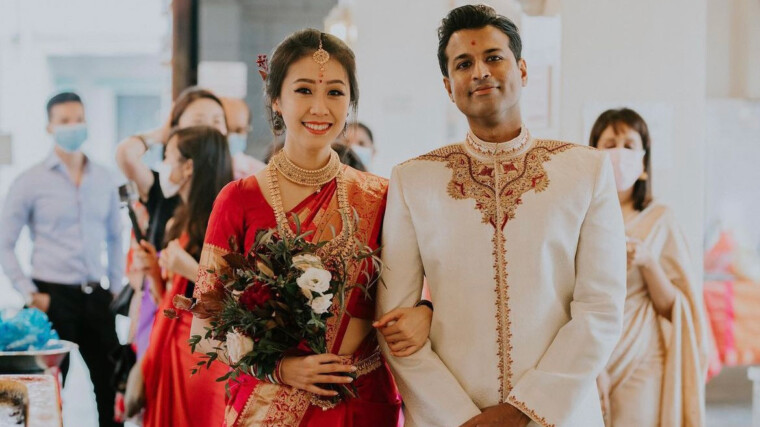Mr Murali Dharan and Ms Sandie Soh’s first dinner date conversation veered far from the typical romantic script. Driven by concerns about Murali’s dietary restrictions, Sandie wanted to seek clarification on his ethnicity and religion.
In an attempt to broach the topic, she awkwardly blurted out, “What are you?”
Despite the initial surprise, Murali understood her intentions and they shared a laugh afterwards. However, the subject of race continued to linger throughout that evening.
Murali said: “I was mindful that race could potentially be an issue, so I asked if being Indian was a deal-breaker quite early on. Thankfully, she very quickly dismissed it.”
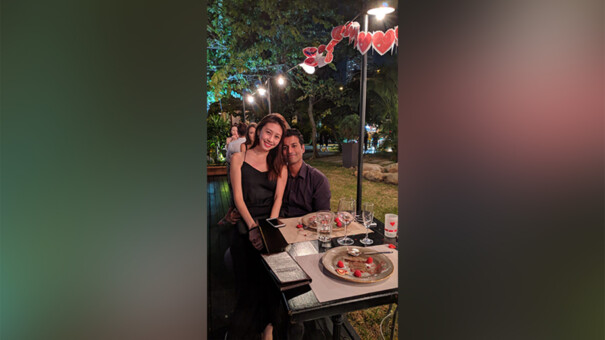
The Chinese-Indian couple, both 37, have since celebrated three years of blissful marriage.
They have long accepted that being an interracial couple comes with its unique set of challenges such as judgmental looks in public and occasional snide remarks from taxi drivers.
Recounting an argument she had with her parents when she was in university, Sandie said:
“They only wanted me to date a nice Chinese boy and said that if he weren’t Chinese, they wouldn’t bless the marriage,” adding that this conversation stayed with her throughout her adult years.
Murali, having introduced partners of different races to his family before, also faced similar reservations from his mother.
“There was a concern about how the families would come together. She was worried that I would not be able to acclimatise myself to the new culture and values of someone from another race,” he said.
Recognising that their parents’ perspectives were deeply rooted in generational mindsets, Sandie and Murali embraced the responsibility of educating them, acknowledging that their parents’ comments stem from tradition rather than malice.
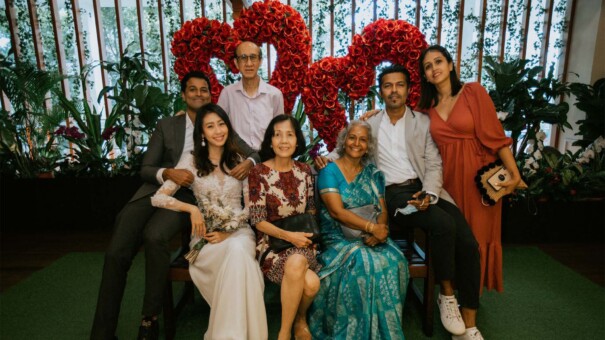
Reflecting on this, Murali said: “They are just very used to what they’re comfortable with, which is being the same race. But being educated in a multicultural society, we’ve learned not to worry about all these not-so-consequential matters.”
In 2019, after numerous practice introduction sessions, Sandie finally introduced Murali to her parents.
“When I told my parents that I had an Indian boyfriend, I cried. It was conflicting because it was supposed to be good news, right?” she recalled.
To her surprise, her parents proved accepting, a testament to evolving times and shifting perspectives, expressing only the wish for Murali to treat her well and uphold commendable values.
“Now they love him more than they love me. Over the weekend, she’ll ask what does he want to eat? Then she’ll cook whatever he wants,” said Sandie, adding that initially, they had the misconception that he only knew how to eat Indian cuisine.
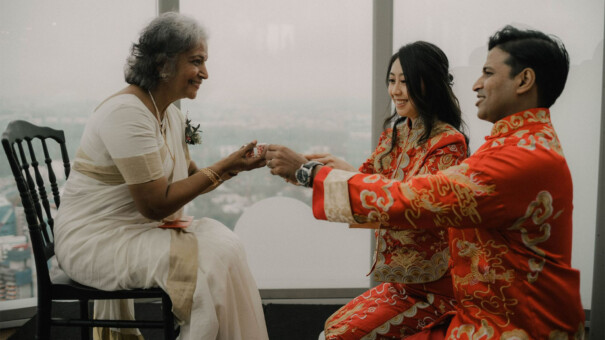
Committed to embracing their respective cultures, the couple held both a Chinese tea ceremony and a Hindu ritual ceremony as part of their wedding. Sandie also customised her second march-in attire, a mandarin collar top and an Indian-inspired lenga skirt to symbolise the union of two cultures.
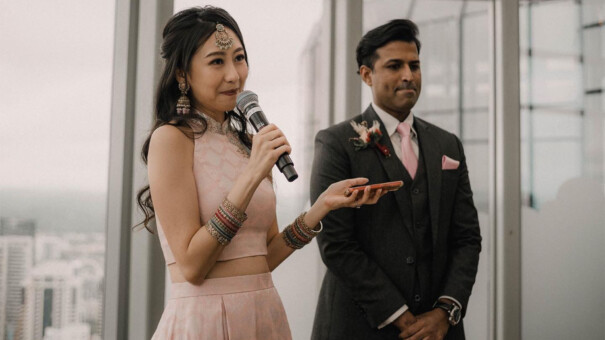
“When Murali’s mother saw what I was wearing, she ran up to give us a hug and it was my proudest moment for the wedding,” she said.
With Chinese New Year approaching, the couple shared their joy in celebrating their respective race’s festivities. This February, they hope to gather both sides of the family for a reunion dinner.
“We usually run through the Chinese sayings and agree on what to say before we enter a house,” he said, adding that he tries to speak some Mandarin and Hokkien to Sandie’s relatives who can’t speak English.
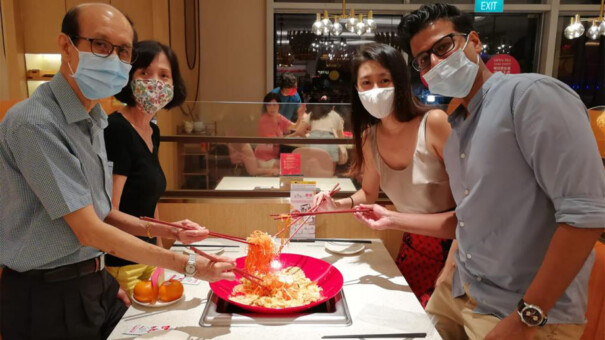
Speaking on interracial relationships in Singapore, the couple feels blessed to have avoided harsh rejection. However, they acknowledge couples facing challenges due to unaccepting families and recognise the ongoing battle against racism.
“We have friends who have been together for 10 years and can’t get married because of family and religion and we really feel for them,” Sandie said.
While they agree that Singapore is heading in the right direction of embracing multiracialism, they believe there is still a long way to go, noting that it is crucial to eliminate ingrained racial biases and stereotypes.
Embracing interracial relationships in Singapore is a testament to the nation’s commitment to multiculturalism, equality, and unity. It reflects progressive values and social maturity and emphasises the importance of building a compassionate and inclusive society which is integral to the country’s identity and strength.
“Hopefully, in generations to come, we won’t need to have such conversations anymore as interracial relationships will be accepted as a norm,” she said.
Together with Murali and Sandie, The Pride wishes all readers a Happy Chinese New Year and a Happy Valentines Day in advance!
